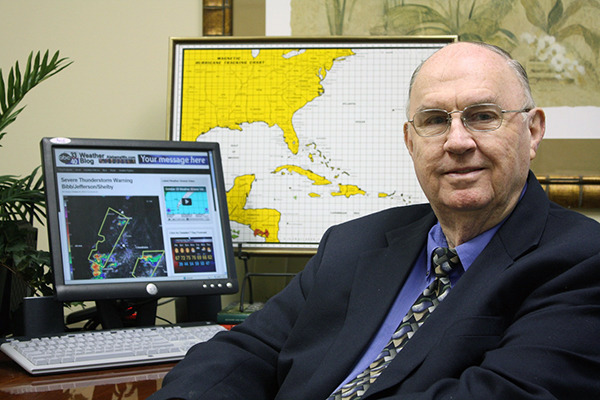How is GOES-16 Impacting Weather Forecasting and Research?
Awesomeness from #GOES16 – Hurricane #Aletta in the East Pacific pic.twitter.com/mCX1uHZhh7
— Dan Lindsey (@DanLindsey77) June 8, 2018
DISCUSSION: With the GOES-16 (or also known as the GOES-East) satellite imager fast-approaching the 2-year mark of its existence as an orbiting highly-advanced weather and observational satellite imager, it certainly has already earned plenty of tremendous of respect and appreciation. Here, you will be taken through some of what this state-of-the-art satellite imager has already accomplished in a relatively short period of time since its launch in late November of 2016. It goes without saying that since the onset of the advanced remote sensing era, there has been a substantial increase in both the prevalence and the confidence invested into the integration of high-resolution satellite imagery into the both weather research and weather forecast process.
As operational National Weather Service meteorologists and other atmospheric research scientists continue to adapt to revolutionary changes in the ways by which we are now able to study the atmosphere, so will the level of detail we find in corresponding results of such work. Thus, it goes without saying that the impacts of the GOES-16 satellite imager have transformed weather forecasting and applied research in a number of profound ways. For example, before the introduction of GOES-16, we could never visualize the initiation of severe thunderstorms to the level of detail which we now can. Whether it is understanding the rate of change with time in terms of how fast the updraft columns are growing horizontally and vertically within a strengthening convective storm or understanding how fast the cloud-top temperatures are evolving on a minute-to-minute basis, GOES-16 is forever changing atmospheric science.
Moreover, when it has come to forecasting both short-term and longer-term changes in association with Tropical Atlantic and Tropical Eastern Pacific hurricanes, GOES-16 has allowed atmospheric scientists who study tropical cyclones in sparkling details and learn even more than we already know and understand about the dynamics and inner core structure associated with both developing and mature tropical cyclones. Whether it has been getting a close-up view of eye wall formation, eye wall replacement cycles, deep convective generation within the inner core of more intense hurricanes (e.g., Hurricane Harvey, Hurricane Irma, and Hurricane Maria from 2017), or even having a more clear understanding for how various tropical storms have interacted with islands or coastal as well as more inland regions of the United States, GOES-16 has not failed to disappoint. Another example of this phenomenal ability is shown in the animated visible satellite imagery of Hurricane Aletta attached above (courtesy of Meteorologist Dan Lindsey who is currently a Senior Scientific Adviser from the National Oceanic and Atmospheric Administration’s National Environmental Satellite, Data, and Information Service program). It is worth noting that Hurricane Aletta was one of the first tropical cyclones which was captured in real-time by GOES-16 and the level of detail you can see within the inner core of Aletta in this animated satellite imagery effectively speaks for itself.
In other respects, GOES-16 has also helped meteorologists to better understand how various atmospheric phenomena work even more which include (but are certainly not limited to) sea-breezes (and convection thereof), cold front progression, squall line formation and/or evolution, fog formation and/or dissipation, wildfire forecasting (and critical monitoring thereof), etc. Thus, these are just more examples which help to strengthen the net argument for how the GOES-16 satellite imager is forever changing the ways in which we are now able to look at and study the Earth’s atmosphere and all the remarkable forces of nature which it generates year in and year out.
To learn more about other neat meteorological observational stories from around the world, be sure to click here!
AlabamaWX is pleased to partner with the Global Weather and Climate Center team for outstanding posts about our atmosphere. Visit them at https://www.globalweatherclimatecenter.com for more great information!
Category: Partner News Stories

















